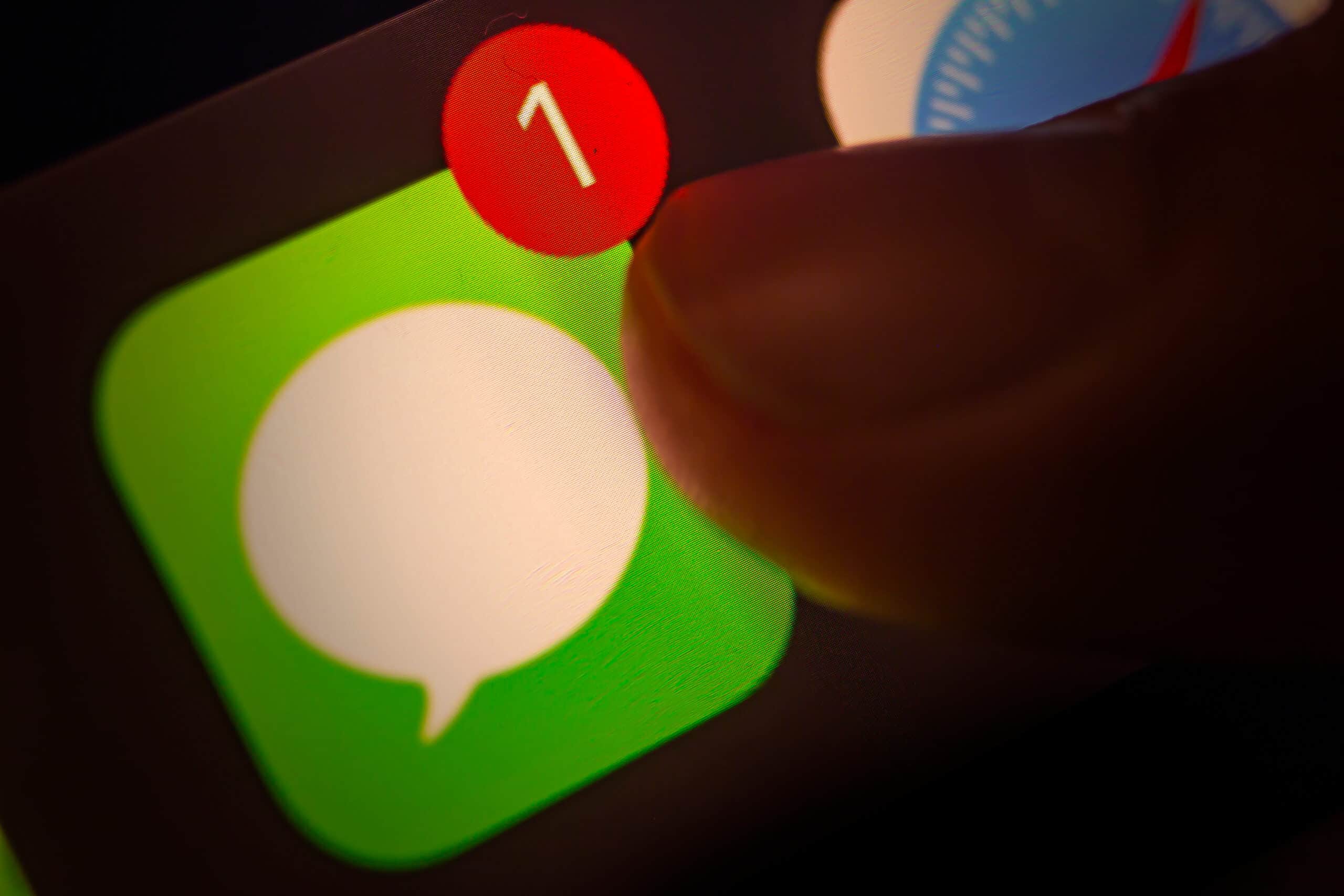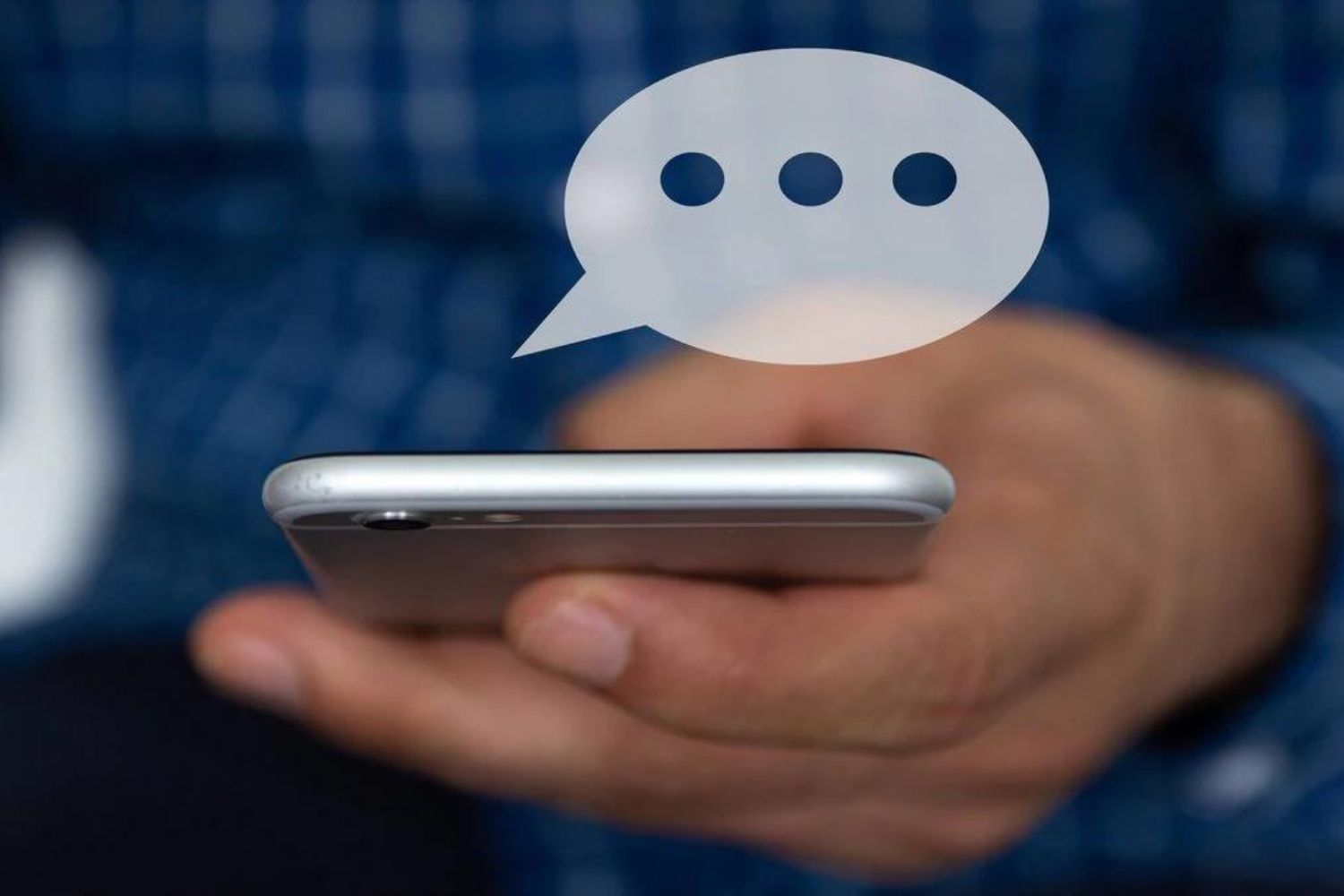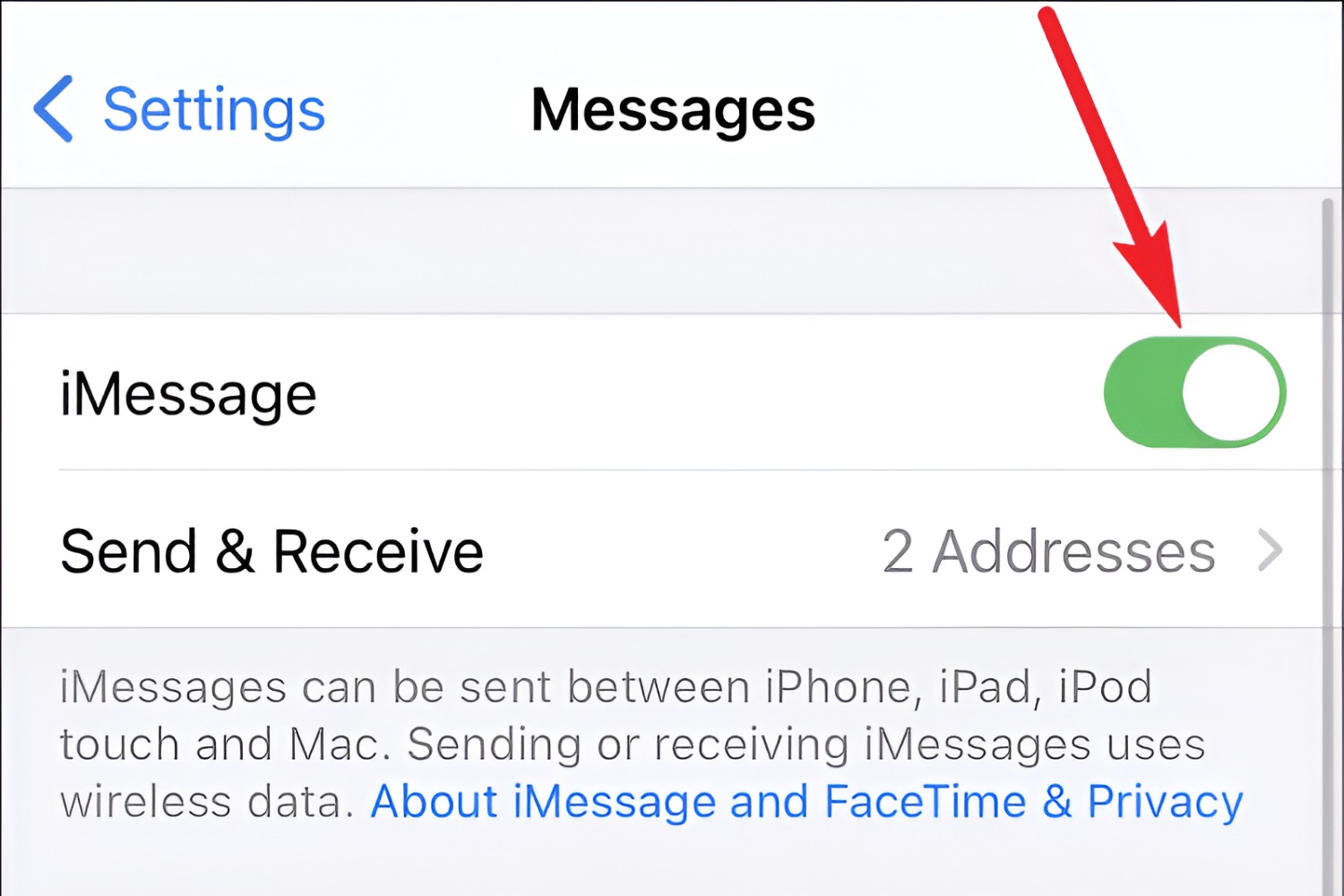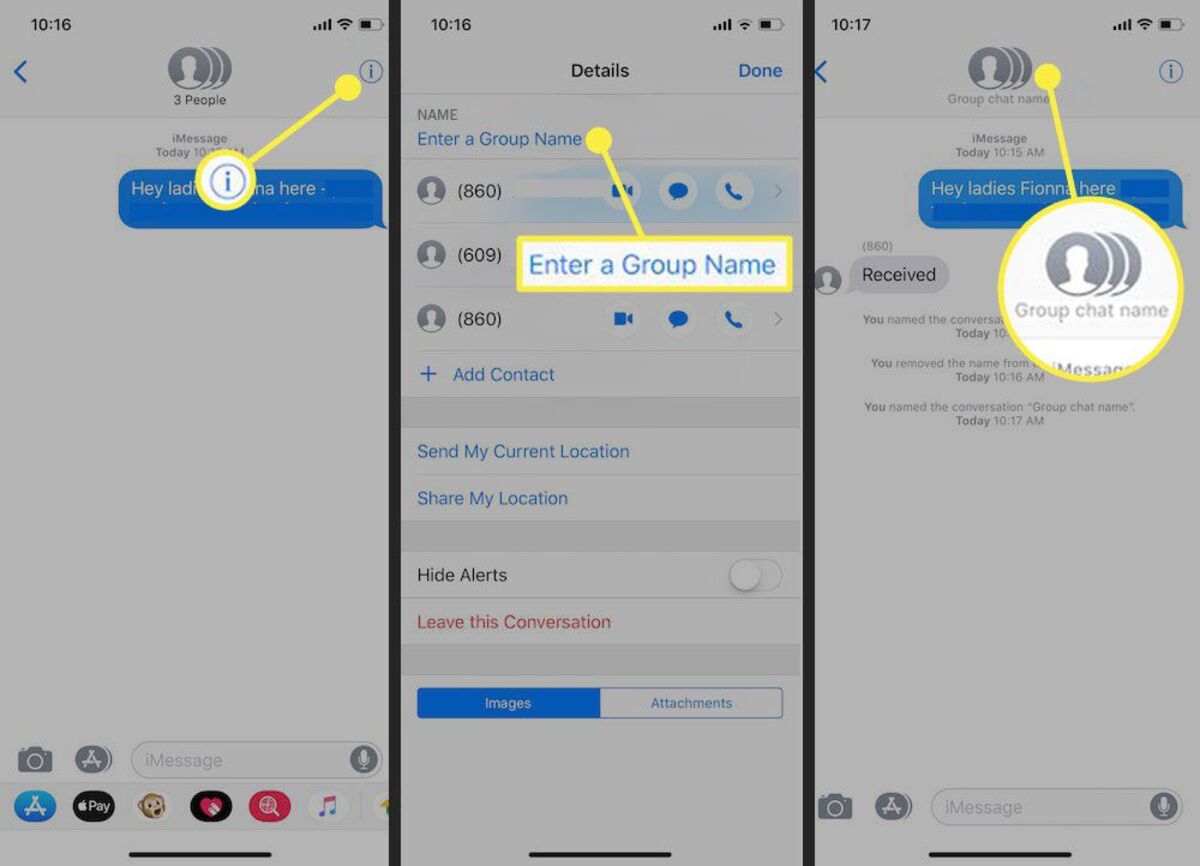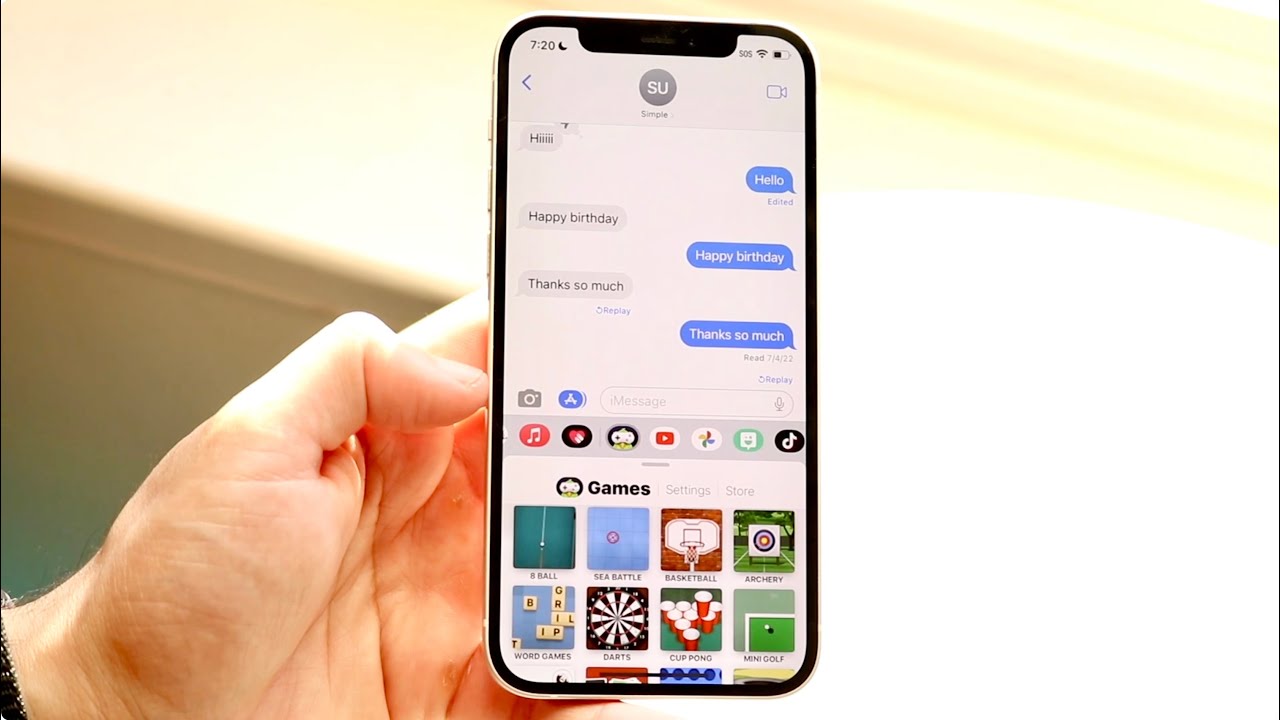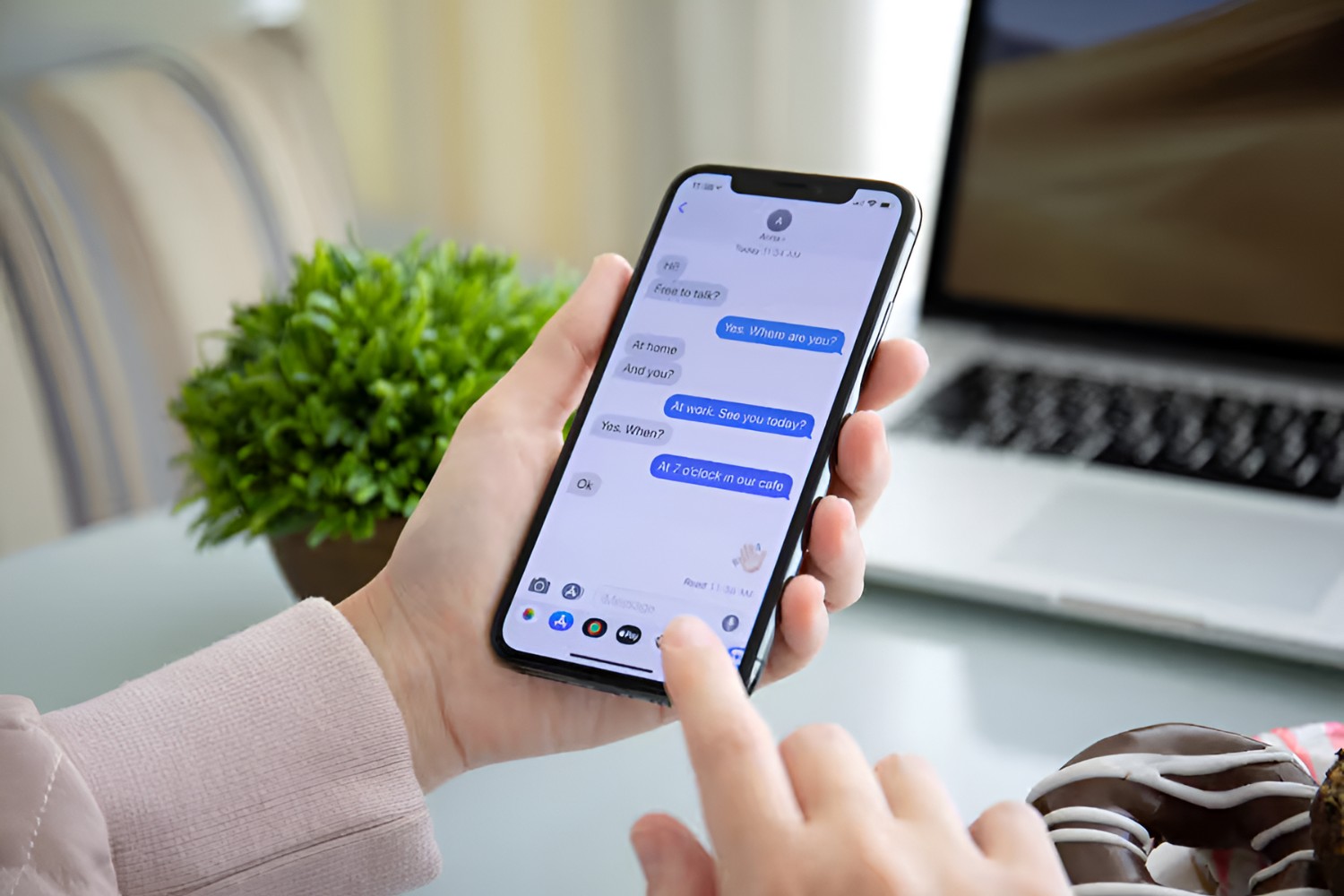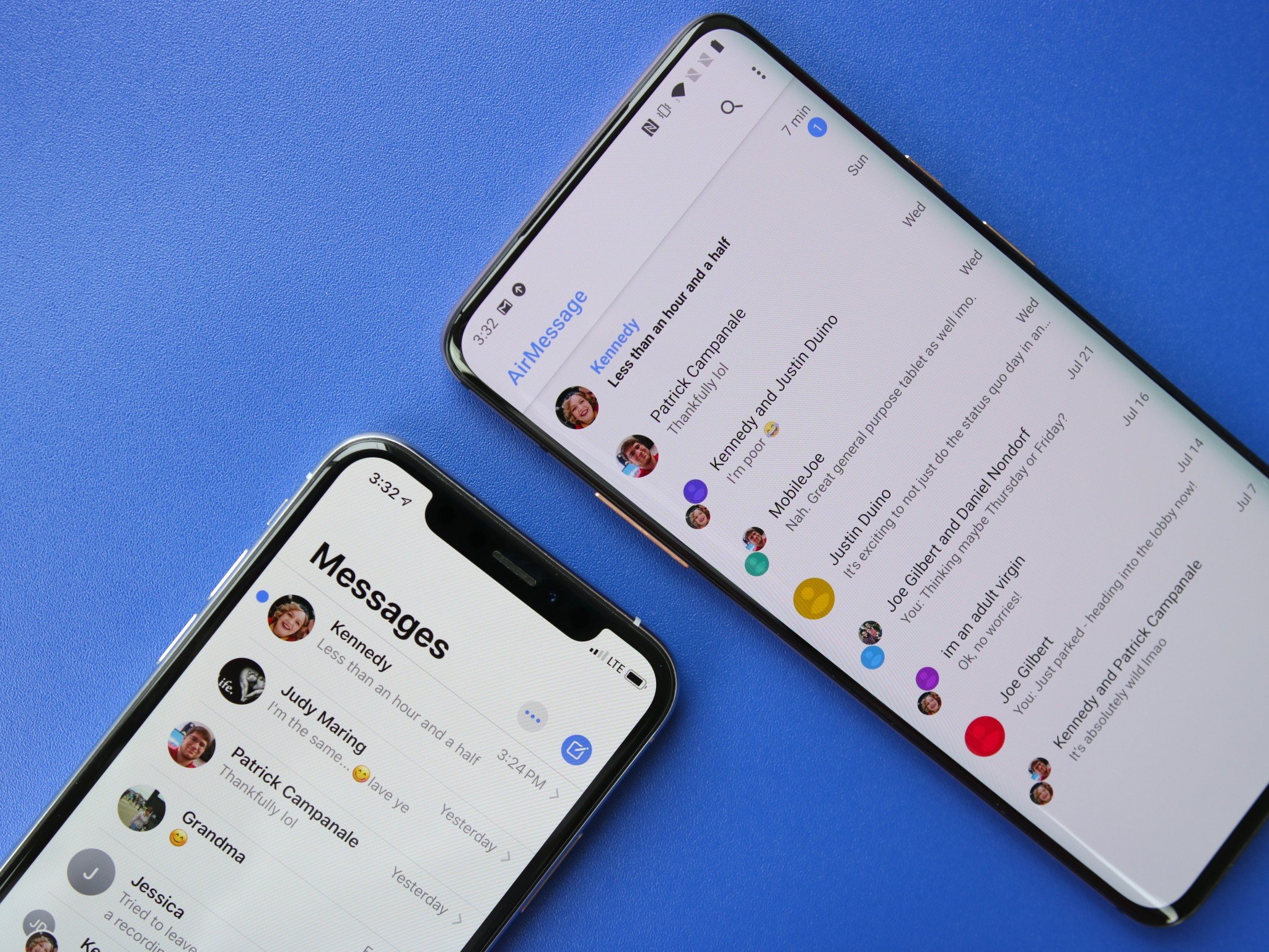Introduction
Welcome to the fascinating world of iMessage! As one of the most popular messaging platforms, iMessage has revolutionized the way we communicate with our friends, family, and colleagues. Whether you’re an avid iPhone user or new to the Apple ecosystem, understanding how iMessage works can help you make the most of this feature-packed messaging service.
With iMessage, Apple users can send text messages, photos, videos, voice recordings, and even play games with their contacts, all without incurring SMS or MMS charges. This seamless integration between devices allows you to stay connected and share moments with ease.
In this article, we will explore the inner workings of iMessage, starting from its setup and configuration to its advanced features and security measures. By the end, you’ll have a comprehensive understanding of how iMessage functions and its capabilities.
So, whether you use iMessage on your iPhone, iPad, or Mac, let’s dive into the captivating world of iMessage and uncover the secrets behind its seamless messaging experience.
What is iMessage?
iMessage is Apple’s proprietary messaging service that allows iOS and macOS users to send text messages, photos, videos, and more to other Apple device users. It’s a free-to-use service that works over Wi-Fi or cellular data, eliminating the need for traditional SMS or MMS messaging.
One of the main advantages of iMessage is that it seamlessly integrates with the Messages app on Apple devices, providing a unified messaging experience across iPhones, iPads, and Macs. This means that you can start a conversation on your iPhone and continue it on your Mac, with all messages syncing between devices in real-time.
iMessage also supports various rich features, such as read receipts, typing indicators, group messaging, and the ability to send voice recordings, stickers, animated GIFs, and digital touch messages. Additionally, users can create and share Animoji and Memoji, which are animated emojis that mimic their facial expressions and voice.
Moreover, iMessage offers end-to-end encryption for all messages sent between Apple devices. This means that only the sender and receiver can access the content of the messages, ensuring privacy and security.
It’s important to note that iMessage is only available to Apple device users, which limits its compatibility with other platforms. When sending a message to a non-Apple device user, iMessage automatically switches to standard SMS or MMS, indicated by the appearance of a green message bubble instead of the typical blue.
In summary, iMessage is a feature-rich messaging platform exclusive to Apple devices. By leveraging Wi-Fi or cellular data, iMessage provides a seamless and secure messaging experience, allowing users to communicate with text, photos, videos, and more, all within the familiar Messages app.
How does iMessage work?
Behind the scenes, iMessage employs a sophisticated system to seamlessly deliver messages between Apple devices. Here is a breakdown of the key components that make iMessage function:
- iMessage setup: When you set up your Apple device, you are prompted to enable iMessage by linking your Apple ID and phone number. This unique identifier allows other iMessage users to reach you using either your phone number or email address associated with your Apple ID.
- Message delivery: When you send a message through iMessage, it first checks if the recipient’s device is also registered with iMessage. If so, the message is sent via Apple’s servers rather than using traditional SMS protocols. This allows for faster and more reliable delivery of messages, especially when connected to Wi-Fi.
- Encryption and security: One of the standout features of iMessage is its strong emphasis on privacy and security. All iMessage messages are encrypted using end-to-end encryption, which means that the content of the messages is only accessible by the sender and the intended recipient. This encryption ensures that your conversations remain private and protected from unauthorized access.
- iMessage features: iMessage offers a variety of features to enhance your messaging experience. For example, read receipts indicate when the recipient has seen your message, while typing indicators let you know when the other person is composing a reply. Group messaging allows you to create group chats and share messages with multiple participants. iMessage also supports multimedia content, such as photos, videos, voice recordings, stickers, and more.
In addition to these core components, iMessage seamlessly syncs your conversations across all your Apple devices. This means that when you switch from one device to another, you can pick up right where you left off, with all your messages and attachments readily accessible.
Overall, iMessage works by utilizing a combination of advanced technologies, encryption, and seamless synchronization to provide a secure, feature-rich, and effortless messaging experience for Apple device users.
iMessage setup
Setting up iMessage is a straightforward process that requires linking your Apple ID and phone number to enable the service on your device. Here is a step-by-step guide on how to set up iMessage:
- Enable iMessage: Open the Settings app on your Apple device and scroll down to find “Messages.” Tap on it, and you will see the option to enable iMessage. Toggle the switch to turn it on.
- Link your Apple ID: After enabling iMessage, you will be prompted to enter your Apple ID. If you don’t have one, you can create it by following the on-screen instructions. Your Apple ID is crucial for identifying your device and allowing other iMessage users to reach you.
- Verify your phone number: Once you have entered your Apple ID, you might need to verify your phone number. This step is necessary to ensure that only the rightful owner of the phone number can use iMessage on that device. Apple will send a verification code to the provided number, which you will need to enter to complete the setup process.
- Choose additional settings: After setting up iMessage, you can customize various options to personalize your messaging experience. For example, you can enable or disable read receipts, choose the default phone number or email address to start new conversations, and decide whether to allow iMessage effects like confetti or balloons.
- Add email addresses: In addition to your phone number, you can add email addresses associated with your Apple ID to receive iMessages. This allows friends and family to reach you using either your phone number or email address, giving you flexibility in communication.
Once you have completed the setup process, you can start using iMessage to send and receive messages with other Apple device users. The Messages app on your device will automatically detect whether a contact is an iMessage user, and the messages will be delivered through iMessage rather than traditional SMS.
It’s important to note that using iMessage requires an internet connection, either through Wi-Fi or cellular data. If you have a weak or unstable internet connection, messages may fail to send or be delayed.
Now that you have successfully set up iMessage on your device, you can enjoy the seamless messaging experience and take advantage of the rich features that iMessage has to offer.
Message delivery
Message delivery is a crucial aspect of iMessage, ensuring that your messages reach their intended recipients in a fast and reliable manner. Let’s take a closer look at how iMessage handles the delivery of messages:
When you send a message through iMessage, the app first checks if the recipient’s device is also registered with iMessage. If the recipient is an iMessage user, the message is sent via Apple’s servers rather than using traditional SMS protocols.
This approach offers several benefits. Firstly, by utilizing Apple’s servers, iMessage can bypass carrier limitations and deliver messages over Wi-Fi or cellular data. This means that you can continue to send and receive messages without relying on cellular network coverage.
Secondly, iMessage leverages the internet to deliver messages, allowing for faster and more consistent delivery compared to traditional SMS or MMS. This is especially advantageous when sending messages with large attachments, such as photos or videos, as iMessage can optimize the transfer and ensure a smooth experience.
If the recipient’s device is not registered with iMessage, the app automatically switches to the traditional SMS or MMS protocols. In such cases, the message is sent as a regular text message, indicated by the appearance of a green bubble instead of the typical blue iMessage bubble.
It’s worth noting that iMessage offers additional message delivery features, such as read receipts and typing indicators. When enabled, read receipts inform you when the recipient has read your message. Meanwhile, typing indicators let you know when the other person is composing a reply, adding a dynamic element to your conversations.
In summary, iMessage’s message delivery mechanism utilizes Apple’s servers to send messages between devices. This approach offers advantages such as fast and reliable delivery, the ability to send messages over Wi-Fi or cellular data, and automatic fallback to traditional SMS when communicating with non-iMessage users.
Encryption and security
One of the key pillars of iMessage is its strong emphasis on encryption and security. Apple prioritizes user privacy and has implemented robust measures to protect the content of iMessage conversations. Here are the encryption and security features of iMessage:
End-to-end encryption: All iMessage messages are encrypted using end-to-end encryption. This means that the content of your messages is scrambled and can only be accessed by the sender and the intended recipient. No one, including Apple, can intercept or read the messages while they are in transit. This level of encryption ensures that your conversations remain private and secure.
Secure authentication: iMessage uses secure authentication methods to verify and establish a secure connection between devices. When you set up iMessage, your device generates a unique cryptographic key pair consisting of a public key and a private key. Your device’s public key is used to encrypt messages, while the private key is stored securely on your device and is used to decrypt the messages you receive. This secure authentication process ensures that only the intended recipient can decrypt and read the messages.
Two-factor authentication: To further enhance security, Apple recommends enabling two-factor authentication for your Apple ID. This adds an extra layer of protection by requiring a verification code in addition to your password when signing in to your Apple ID on a new device. By enabling two-factor authentication, you add an additional safeguard against unauthorized access to your iMessage conversations.
Data protection: iMessage also employs data protection mechanisms to ensure the security of your messages on your device. Your iMessage conversations are stored in an encrypted format on your device’s internal storage. This encryption prevents unauthorized access to your message history in case your device falls into the wrong hands or is lost/stolen.
Trustworthy sender identification: iMessage uses cryptographic keys to identify the sender of a message, making it difficult for malicious users to spoof the identity of another user or intercept messages pretending to be someone else. This helps prevent phishing attacks and ensures that the messages you receive are from authenticated senders.
Overall, iMessage takes privacy and security seriously by employing end-to-end encryption, secure authentication, two-factor authentication, data protection, and trustworthy sender identification. These measures work together to provide a secure messaging environment, giving you peace of mind when communicating through iMessage.
iMessage features
iMessage offers a plethora of features that go beyond basic text messaging, enhancing the overall messaging experience for Apple device users. Let’s explore some of these exciting features:
1. Rich media support: iMessage allows you to send more than just text messages. You can easily share photos, videos, voice recordings, and even high-quality files with your contacts. This feature enables you to express yourself and share moments in a more engaging and impactful way.
2. Read receipts and typing indicators: With iMessage, you can see when your messages have been read by the recipient. When enabled, read receipts provide a visual confirmation that your message has been seen, letting you know that your message has been received and acknowledged. Additionally, typing indicators notify you when the other person is composing a reply, helping you anticipate their response.
3. Group messaging: iMessage makes it effortless to engage in group conversations with family, friends, or colleagues. You can create groups, name them, add or remove participants, and have seamless group conversations. This feature is perfect for coordinating plans, sharing updates, or simply staying connected with multiple people.
4. Animoji and Memoji: Adding a playful twist to your messages, iMessage offers Animoji and Memoji, animated emojis that mirror your facial expressions and voice. With an array of characters and customization options, you can bring your messages to life and inject fun and personality into your conversations.
5. Digital touch messages: iMessage allows you to create and send digital touch messages. This feature lets you draw or sketch using various colors and effects directly on the message canvas. You can also send heartbeats or taps to add a personal and interactive element to your messages.
6. Stickers and GIFs: The Messages app provides an extensive collection of stickers and GIFs that you can add to your messages. These visual enhancements allow you to express emotions, add humor, or simply make your conversations more visually appealing.
7. Message effects: iMessage offers a range of message effects to add an element of surprise and delight to your conversations. You can send messages with invisible ink, which requires the recipient to swipe to reveal the hidden content. Other effects include confetti, balloons, fireworks, and more, which add a touch of whimsy to your exchanges.
8. App integrations: iMessage integrates with various apps, allowing you to perform specific tasks directly within the Messages app itself. For example, you can order food, make reservations, send money, or play games without leaving your conversation. These integrations make iMessage a versatile platform for both communication and productivity.
With these and many other features, iMessage goes beyond simple text messaging, making your conversations dynamic, expressive, and interactive. These features contribute to a vibrant and engaging messaging experience that keeps users connected and entertained.
Conclusion
iMessage, Apple’s proprietary messaging service, offers a seamless and feature-rich messaging experience for iOS and macOS users. By leveraging the power of Wi-Fi or cellular data, iMessage allows users to communicate with text, photos, videos, voice recordings, and more, all within the familiar Messages app.
In this article, we have explored the various aspects of iMessage, starting with its setup process, which involves linking your Apple ID and phone number to enable the service on your device. We then delved into the message delivery mechanism that ensures fast and reliable transmission of messages between Apple devices.
Furthermore, we explored the robust encryption and security measures implemented by iMessage, such as end-to-end encryption, secure authentication, two-factor authentication, and data protection. These features provide users with privacy and peace of mind, knowing that their conversations are kept secure from unauthorized access.
We also highlighted the wide range of features available in iMessage, including rich media support, read receipts, typing indicators, group messaging, Animoji and Memoji, digital touch messages, stickers and GIFs, message effects, and app integrations. These features enhance the overall messaging experience, allowing users to express themselves, interact with their contacts, and make conversations more engaging and dynamic.
Overall, iMessage is a powerful messaging platform that seamlessly connects Apple device users, offering a secure and feature-rich environment for communication. Whether you’re using iMessage on your iPhone, iPad, or Mac, understanding how iMessage works and its extensive features can help you unlock its full potential and make the most of this versatile messaging service.
So, embrace the world of iMessage and enjoy the convenience, creativity, and connection it brings to your daily communication.









